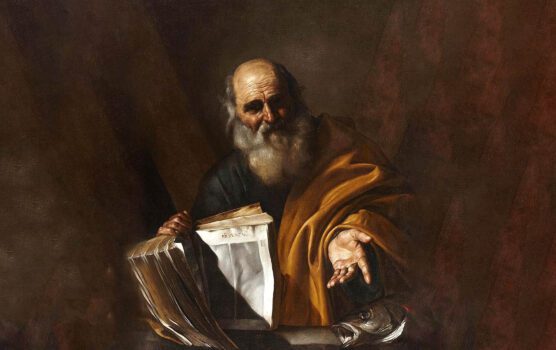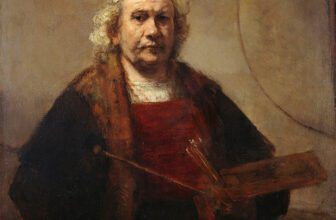Most Famous Paintings by Jusepe de Ribera
In the pantheon of Baroque masters, Jusepe de Ribera stands as a towering yet often underappreciated figure. His works are imbued with intense realism, psychological depth, and a hauntingly raw portrayal of human suffering. Ribera’s legacy is one of artistic courage, unafraid to portray pain, truth, and divine ecstasy with the same brutal honesty. His life story is as compelling as his art, blending the mythic and the mysterious, and his paintings remain among the most visceral and emotionally gripping works of the 17th century.
Who Was Jusepe de Ribera?
Jusepe de Ribera was born in 1591 in Xàtiva, near Valencia in Spain, and he died in Naples in 1652. Though Spanish by birth, Ribera spent nearly his entire professional life in Italy, particularly in Naples, which was under Spanish rule at the time. This geographical placement gave his work a unique dual identity: he absorbed the dramatic tenebrism of Caravaggio in Italy while maintaining a deep Spanish sensibility.
He is often referred to by his Italian name, Giuseppe Ribera, and also nicknamed “Lo Spagnoletto” or “the Little Spaniard,” a moniker reflecting both his heritage and possibly his small physical stature.
Ribera is best known for his dramatic and often gruesome religious and mythological subjects, executed in the tenebrist style, a stark contrast between dark and light, pioneered by Caravaggio. His paintings delve into the brutal realism of the human body and spirit, making him a master of both form and feeling.
The Story of Jusepe de Ribera’s Life
Ribera’s journey from Spain to Italy is shrouded in mystery. Little is known about his early years, and much of his life is reconstructed from fragmented records. Some suggest he studied under Francisco Ribalta in Valencia, while others argue he may have traveled to Italy as early as his teens. By 1613, he was definitely in Rome, absorbing the Caravaggesque style that would deeply influence his work.
Eventually, Ribera settled in Naples by around 1616, where he quickly rose to prominence. At the time, Naples was one of the most vibrant art centers in Europe, and Ribera found both patronage and influence there. His connection with the Spanish viceroyalty in Naples helped secure commissions from the elite and the church, and he remained a dominant figure in the Neapolitan art scene for decades.
Although celebrated in his lifetime, Ribera’s work fell out of favor after his death, often deemed too harsh or grotesque for the changing tastes of the later Baroque and Rococo periods. However, modern reassessment has recognized him as one of the most profound painters of the human condition.
What Is Jusepe de Ribera Known For?
Ribera is known for:
Tenebrism: His mastery of light and shadow made him one of the most dramatic interpreters of Caravaggist aesthetics.
Realism: Ribera did not beautify his subjects. Saints, martyrs, philosophers, and peasants were all depicted with the same brutal realism, from gnarled hands to contorted expressions.
Martyrdom Scenes: Many of Ribera’s religious paintings depict saints undergoing intense suffering, often with a disturbing intensity.
Mythological and Philosophical Subjects: He also painted Greek philosophers and figures from classical mythology with rugged naturalism, portraying them as ordinary men burdened with knowledge.
Most Famous Paintings by Jusepe de Ribera
1. The Martyrdom of Saint Bartholomew (c. 1634)
Perhaps Ribera’s most iconic painting, this terrifying depiction shows Saint Bartholomew being flayed alive. The saint’s expression is a mixture of agony and spiritual transcendence, and the painting’s realism makes it unforgettable. The play of light on the flesh and the executioners’ calm demeanor create a chilling atmosphere.
2. Apollo and Marsyas (c. 1637)
Another brutal image of flaying, this time from mythology. Marsyas, the satyr, is strung upside down as Apollo skins him alive. The raw violence and the quiet cruelty of Apollo highlight Ribera’s ability to blend myth with emotional realism.
3. The Clubfooted Boy (1642)
This poignant painting of a disabled child holding a crutch and a piece of paper bearing a prayer is among Ribera’s most tender and socially conscious works. It combines realism with dignity, challenging viewers to see beauty and strength in what society deemed deformity.
4. Saint Jerome and the Angel of Judgment (1626)
This work captures Saint Jerome with an ecstatic expression as he is visited by a divine messenger. The saint’s emaciated form and wild eyes evoke the intensity of spiritual revelation.
5. Democritus (c. 1630)
From his series of philosophers, Ribera’s Democritus laughs knowingly, holding a compass. These portraits blurred the line between intellectual pursuits and peasant humility, challenging contemporary ideals of wisdom and status.
6. The Bearded Woman (1631)
A striking and provocative painting, this shows a real woman, Magdalena Ventura, who suffered from hirsutism. Ribera painted her breastfeeding her child, presenting her with dignity and curiosity rather than ridicule.
What Is the Most Expensive Painting by Jusepe de Ribera?
While Ribera’s works have appeared at auctions over the years, most are held in public institutions and rarely change hands. However, in recent years, his paintings have fetched millions of dollars when offered at major auction houses.
One of the most expensive known sales occurred in 2010, when his “Saint Bartholomew” sold for approximately £3.8 million (over $6 million USD) at a London auction. This sale reaffirmed Ribera’s rising market value and renewed interest among collectors and museums.
It’s important to note that due to the rarity of Ribera’s works in private hands, his highest-value paintings may well be considered priceless and held permanently in museum collections.
How Many Paintings Did Jusepe de Ribera Create?
The exact number of Ribera’s paintings is difficult to determine due to lost works, forgeries, and attributions, but art historians estimate he produced around 250 to 300 paintings during his lifetime. In addition, Ribera was also a prolific printmaker, creating etchings that were widely circulated and influential in their own right.
His output included:
Religious works (majority of his oeuvre)
Mythological scenes
Philosophical portraits
Genre paintings
Portraiture (less frequently)
His studio was also productive, and many works were produced with the help of assistants. As a result, scholars continue to debate the authorship of some works attributed to him or his workshop.
Where Can You Find Jusepe de Ribera’s Paintings Today?
Ribera’s paintings are now housed in major museums and collections across the world. Some of the most significant holdings include:
Spain
Museo del Prado (Madrid): Home to a vast collection of Ribera’s works, including The Martyrdom of Saint Bartholomew, Saint Andrew, and several portraits.
Museo de Bellas Artes de Sevilla: Features both religious and mythological paintings.
Italy
Museo di Capodimonte (Naples): Contains a rich collection, including Apollo and Marsyas and Saint Jerome.
Galleria Nazionale d’Arte Antica (Rome)
United Kingdom
National Gallery (London): Holds several of Ribera’s works including The Martyrdom of Saint Philip.
France
Louvre Museum (Paris): Features Ribera’s haunting work The Clubfooted Boy.
United States
The Metropolitan Museum of Art (New York): Holds important examples of Ribera’s religious paintings and prints.
The Getty Center (Los Angeles): Possesses works that show Ribera’s deep psychological realism.
Germany
Alte Pinakothek (Munich): Includes several of his key paintings from the later period.
Jusepe de Ribera’s Artistic Legacy
Ribera’s legacy is complex and powerful. For many years, his reputation was overshadowed by the brutality of his images. In the Romantic and Victorian periods, art critics often recoiled from his depictions of suffering and labeled them as grotesque. However, modern audiences have come to admire the emotional intensity, moral depth, and technical brilliance of his work.
His contributions to art include:
Elevating Pain as a Spiritual Experience: Ribera’s martyrs suffer not for spectacle, but for transcendence. Their suffering is transformative.
Naturalism and Honesty: He captured physical imperfection and spiritual dignity with equal intensity.
Influence on Neapolitan and Spanish Artists: Ribera inspired generations of painters, including Luca Giordano and Salvator Rosa in Italy, and later artists like Francisco de Goya in Spain.
Rehabilitation by Modern Scholars: In recent decades, exhibitions and academic reassessments have returned Ribera to his rightful place alongside Caravaggio and Velázquez.
The Unflinching Eye of a Baroque Master
Jusepe de Ribera painted the world not as it ought to be, but as it is, flawed, beautiful, painful, and sublime. His paintings stare directly into the soul, unearthing the depths of human experience through chiaroscuro and flesh. His saints bleed, his philosophers wrinkle, his women grow beards, and yet through it all, there is a fierce dignity and an unwavering commitment to truth.
Today, his legacy is being rediscovered by art lovers and historians alike. Far from a relic of Baroque severity, Ribera is increasingly seen as a modern artist ahead of his time, unafraid to show the brokenness and grace of the human form. In a world still struggling with questions of suffering, faith, and identity, the work of Jusepe de Ribera remains profoundly relevant.




